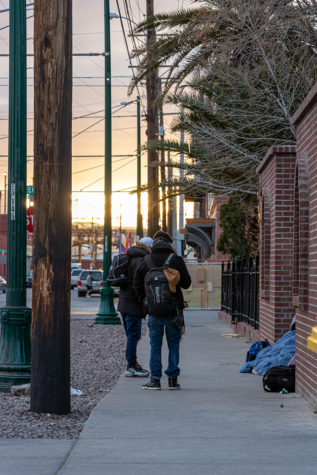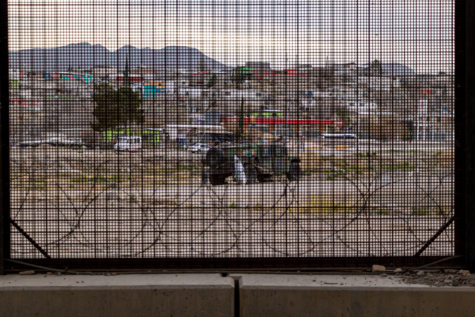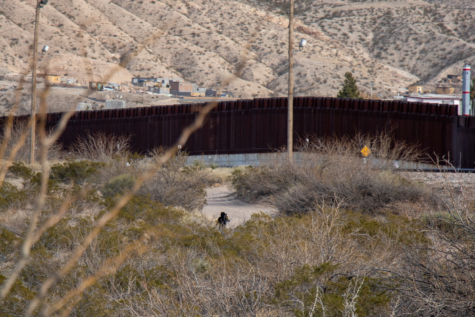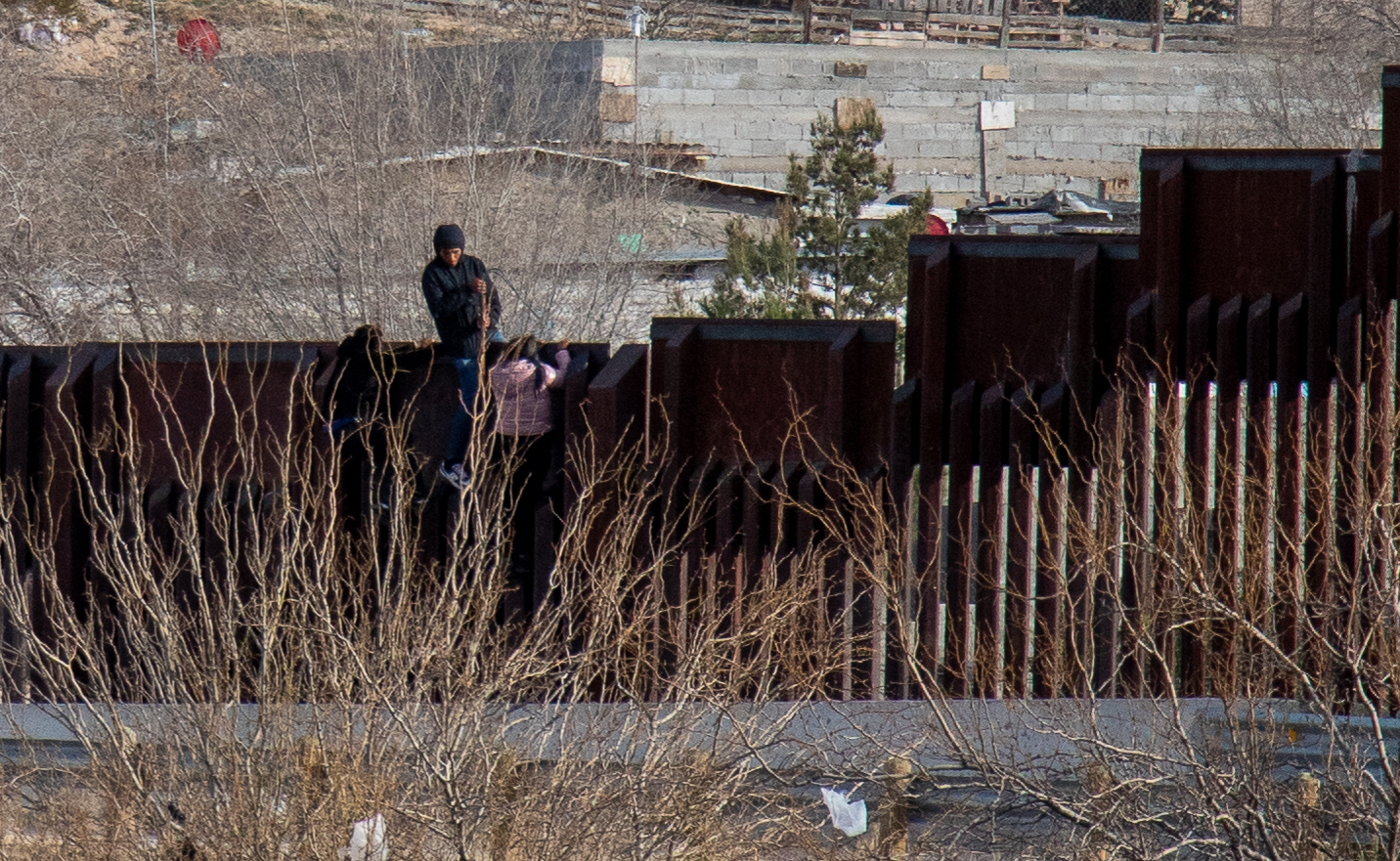The ongoing migrant crisis at the borderland
March 6, 2023
Since last year the City of El Paso has been the forefront of the migrant discussion as thousands of individuals from Central and South America make their way to the United States in search of jobs, money and well-being. This dream is not a new idea as millions of migrants fled from every inch of the globe to find a new life here in the U.S., especially here in the Sun City as the city’s former name “El Paso del Norte” welcomed those into the southwest. The current influx at our border centers around three major components; the instability in Central and South America, Title 42 and the weaponization of immigration in U.S. politics.
The current political and social instability found within Latin American countries stems from a diverse set of factors that vary from country to country, and it can be difficult to pinpoint one exact cause for our current humanitarian crisis at the U.S.-Mexico border.

The narrative for months has simply been about the massive backlog of migrants at the border. That remains true, but weeks after the massive national attention the issue gained, the problem has morphed into a multilayered issue. The massive crowds that graced headlines have dissipated as many migrants have found their way across the country after their asylum hearings. Those left in mid-February have come across a disheartening dilemma.
A Belizean named Edgar, traveled to seek work in Virginia. This is nothing new. Many of the migrants that have come in to find work and send money back home. The problem that has surfaced is the lack of transportation out of the city. Edgar has been sheltered at Sacred Heart Church for nearly a month in hopes of finding enough money to travel to Virgina as he awaits the verdict of his asylum hearing.
“I am stuck here,” Edgar said. “I came here for my immigration hearing and now I do not have any money to head to Virgina. It was very important for me to come to my hearing, but it left me with nothing.”
Edgar details the reasons he left his country of Belize and the turning point that forced him to flee and seek asylum.
“The racism, the quality of policing and the fact that I was simply left with nothing,” Edgar said. “I had lost everything. I had no reason to stay (in Belize). Those neighboring countries are not all that great. I went to Guatemala, but it was very difficult there, too. A lot of crime and violence, but I came (to the U.S.) because there are more laws and regulations.”
Unfortunately, asylum can be a difficult road for people like Edgar as detailed by the Director of the Center for Inter-American and Border Studies at the University of Texas at El Paso, Josiah Heyman, Ph.D. Heyman gives a simple definition for asylum: “(Asylum is a) provision in U.S. law and international law that allows people to seek protection from persecution.”
In theory, asylum would allow for most of the migrants at our border, like Edgar to declare themselves at a port of entry, be processed and await trial in front of an immigration judge to make a case for asylum. In practice, however, that has not been happening.
“(Asylum seekers) can be individually persecuted by a government official or criminal organization,” Heyman said. “For example, in the situation where there’s extensive violence against women and the governments are unwilling and unable to protect women, the case has been made that women are being persecuted.”
The U.S. government has constantly been shifting the goal post when it comes to asylum requirements. The most recent shift is the enforcement of Title 42. Title 42 allows federal entities the authority to deny entry of people into the U.S. with the intent of preventing the spread of diseases. First drafted in 1944 Title 42 was invoked by the Trump administration in March 2020 to prevent the spread of COVID-19 through points of entry. At the time, the provision was a safe and needed measure as the U.S. recorded nearly 25,000 new cases a day according to the New York Times.
Now, nearly three years removed from the uncertainty, the U.S. has moved pass the fear of COVID-19 with well over 650 million vaccine doses administered and an average of less than 5,000 cases per day. Despite the new outlook on the pandemic, the Supreme Court upheld the policy Dec. 27, 2022, until an official ruling is made in the GOP led lawsuit, Arizona v. Mayorkas.

“The States contend that they face an immigration crisis at the border and policymakers have failed to agree on adequate measures to address it,” said Justice Niel Gorsuch in his dissent. “The only means left to mitigate the crisis, the States suggest, is an order from this Court directing the federal government to continue its COVID-era Title 42 policies as long as possible.”
Despite the push to end the provision, the Biden Administration continues to shift its requirements for asylum while the status of Title 42 is debated.
“Right now, (Title 42) is being used to throw people out without allowing them to ask for asylum,” Heyman said. “There’s a new provision, implemented under the Biden administration within the last month in which people are not allowed to ask for asylum when they arrive at the border.”
Texas Governor Greg Abbott has put forth several controversial measures in the state’s attempt to curb migration. One of the most notorious measures has been Operation Lone Star which is meant “to combat the smuggling of people and drugs into Texas.” On top of the Operation Lone Star, which has cost Texas nearly $4 billion, Abbott ordered the Texas Department of Public Safety (DPS) and Texas Military Department (TMD) to the southern border to “combat (the) border crisis” Nov. 16, 2022.
“States are not supposed to enforce immigration law,” Heyman said. “The state thing is likely to be illegal in the long run, they’re just going to drag it out through the courts.”
Regardless of its legality, the Governor insists that his efforts are necessary given the lack of federal attention the issue has received. That has not stopped people from seeking the “American Dream.”
Another gentleman by the name of David fled from Venezuela late last year and has been in El Paso since mid-January. David details a very similar situation at home to Edgar.

“In Venezuela, there is no education, there is not healthcare, there is nothing,” David said. “That is what forces us out. The situation in the U.S. is obviously a better future. I had been to several other countries before deciding to come here. Colombia, Ecuador and other South American countries and one researches which country offers good pay and how one can go to that country. The U.S. is clearly the best nation, its first class and I decided to come here because one would not be exploited like other countries would. We are tired of our country and some neighboring countries exploiting us.”
Venezuela is currently in an economic crisis, exacerbated by U.S. sanctions, which spiked in 2018 when the country’s hyperinflation rate climaxed to the point that a loaf of bread was worth 24.25 Venezuelan Bolivars, or $5.60. Central America has also been hit by waves of violence and terror in a civil war between a weakened state, the U.S.-grown gang known as MS-13 and a U.S.-backed military coup from 2009 which left Honduras specifically in disarray. These issues have forced individuals to flee the violence and suppression that, in most cases, would qualify for asylum.
Heyman stresses that the U.S. does have the capability to properly process the individuals and keep them safe in the meantime.
“We can process people,” Heyman said. “It shouldn’t be dumped on the shoulders of border communities. It’s much more doable than things we do constantly, like ship weaponry to Ukraine. It won’t cost anywhere near as much and it’s not as logistically challenging. We just really need to make a moral and ethical commitment to it.”

Alfredo Valenzuela • Sep 29, 2023 at 2:23 pm
El autor denota madurez profesional y haber investigado el tema con amplitud.